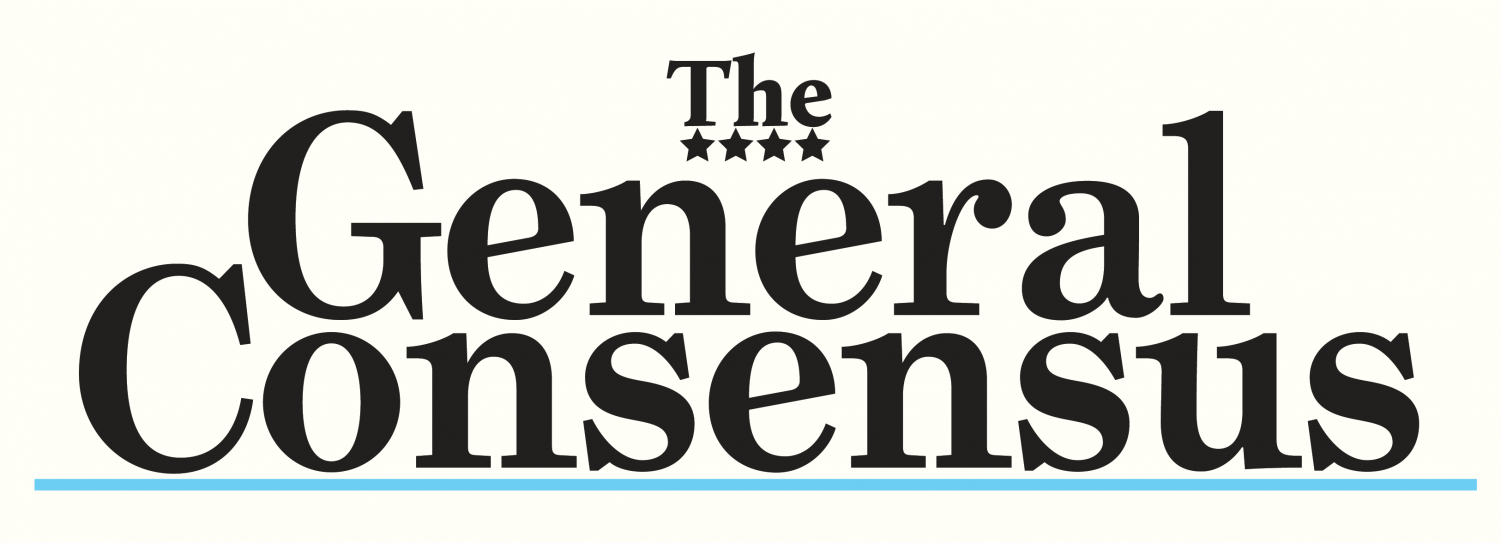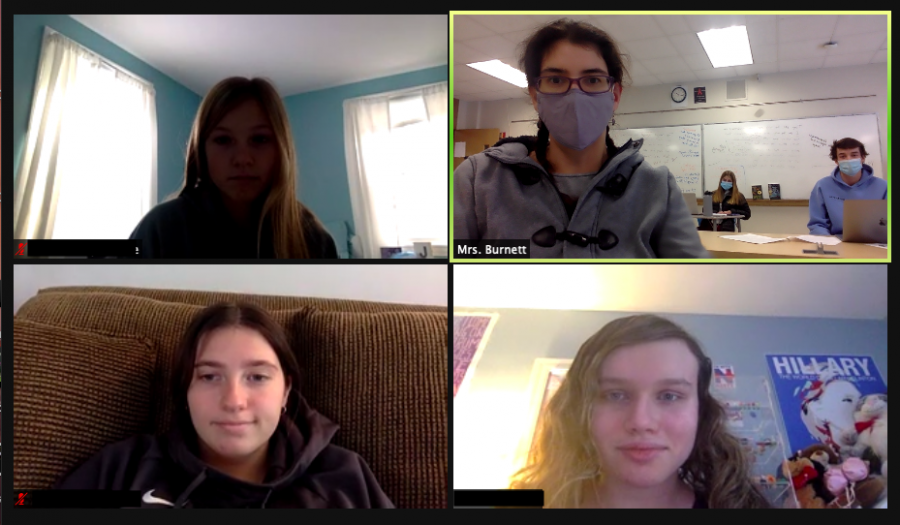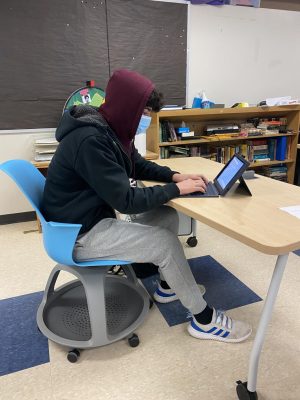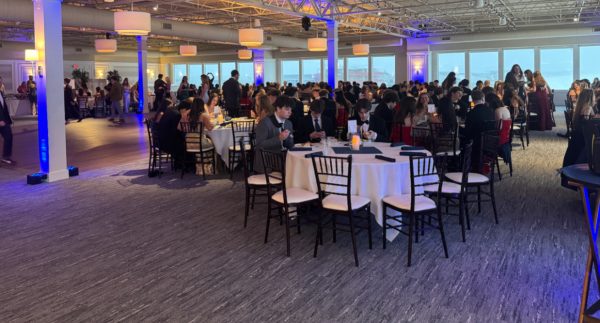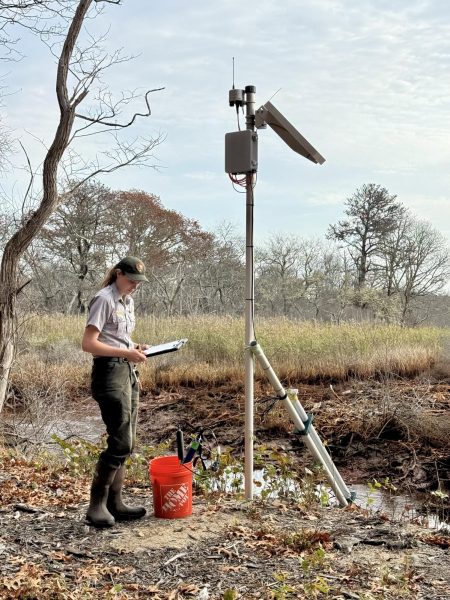Asynchronous Learning is No More
Commissioner Seeks More Live Instruction
Mrs.Burnett zooms with remote students while teaching her in-person hybrid students.
On December 10, 2020 Massachusetts Department of Elementary and Secondary Education Commissioner Jeffery C. Riley changed the number of required synchronous hours for students.
According to 603.CMR.27.00 “Effective January 19, 2021, districts and schools operating a hybrid learning model must provide at least 35 hours of “live instruction” over a 10-school day period, averaged across the grades in the hybrid model. Live instruction means the combination of in-person and remote synchronous instruction.”
This new amendment would require schools operating in the hybrid model, such as Hamilton-Wenham, to change their learning models. Students would need to have live instruction even when asynchronous. In other words, students would need to zoom in to all their classes when working from home.
This will mean a significant change for students across the Hamilton-Wenham school district. Currently, the majority of hybrid high school students complete work independently on asynchronous days. However, several classes have required students to zoom in while remote since the beginning of the school year.
These changes regarding live instruction are rooted in Commissioner Riley’s concern for students’ mental health. In his memorandum, he said, “We know that one way to prevent the isolation and disconnection that many students are feeling is frequent connections and interactions with teachers and peers.”
He notes that many schools have at least one day where students are fully asynchronous and do not interact with their teachers or peers. Riley’s solution was to set a “minimum standard” for live instruction.
This is a big change for remote and hybrid students. Fully remote students will now have 35 hours of live instruction every ten days. Previously, much of their work was completed independently with weekly check-ins with teachers. Hybrid students will also have to connect with teachers for live instruction on days once dedicated to working asynchronously.
How schools will specifically enact these new requirements will be determined between now and January 19th, but it’s clear this change will have a big impact on schools throughout Massachusetts.
Ellie Holbrook is a freshman at Hamilton Wenham Regional high school. She is very happy to be helping with the General Consensus. Ellie loves to write...
Sydney Dolan a freshman at Hamilton-Wenham. Sydney thought that journalism would be an interesting experience for her since she has always enjoyed English...
Amber Scanlon is a Junior at Hamilton-Wenham Regional High School and is a student journalist for the school newspaper, The General Consensus. This is...
Kate Convey is a junior at HWRHS. She has written for the General Consensus before, in 2019. She has always been interested in journalism and writing,...

